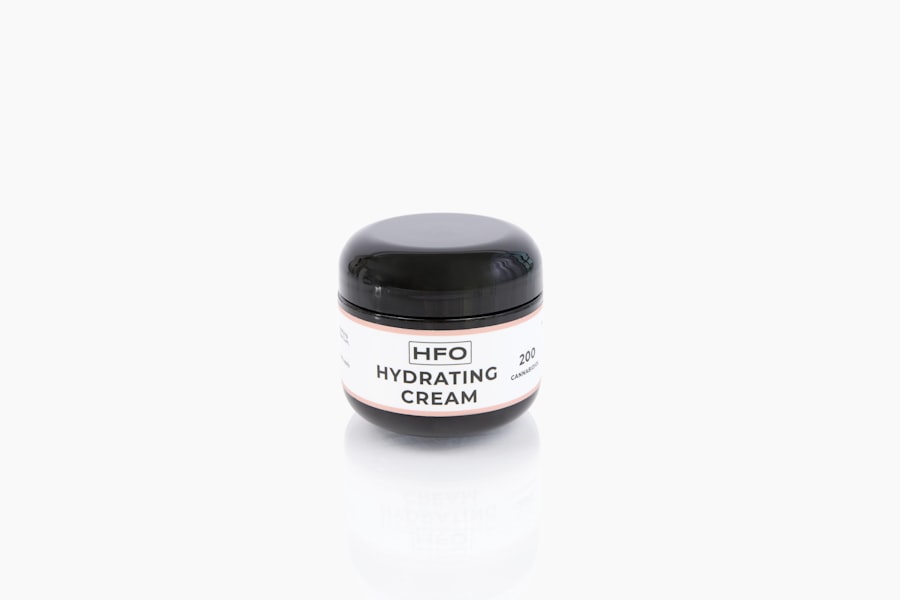Laser hair removal is a popular cosmetic procedure that utilizes concentrated beams of light to target and eliminate unwanted hair. The process works by emitting a specific wavelength of light that is absorbed by the pigment in the hair follicles. This absorption generates heat, which damages the follicle and inhibits future hair growth.
As you consider this treatment, it’s essential to understand how it works and what to expect during your sessions. During your initial consultation, a trained professional will assess your skin type, hair color, and overall health to determine if you are a suitable candidate for laser hair removal. The effectiveness of the treatment can vary based on these factors, as darker hair tends to absorb the laser light more effectively than lighter hair.
You may also learn about the different types of lasers used in the procedure, each designed for specific skin and hair types. Understanding these nuances will help you make an informed decision about whether this treatment aligns with your beauty goals.
Key Takeaways
- Laser hair removal targets hair follicles to reduce hair growth
- Shave the treatment area before the procedure
- Apply soothing creams and cold compresses to reduce discomfort and redness
- Use sunscreen and avoid sun exposure after treatment
- Avoid hot showers, saunas, and certain skincare products after laser hair removal
- Schedule regular maintenance sessions for long-term hair reduction
- Seek professional help if you experience severe pain, blistering, or infection
Preparing for Laser Hair Removal
Preparation is key to ensuring a successful laser hair removal experience. Before your appointment, you should avoid sun exposure for at least two weeks. Tanning can increase the risk of complications and may affect the efficacy of the treatment.
If you have recently tanned or have a sunburn, it’s advisable to reschedule your session until your skin has returned to its normal state. Additionally, you should refrain from waxing or plucking hair in the treatment area for several weeks prior to your appointment, as these methods can remove the hair follicle that the laser targets. On the day of your treatment, arrive with clean skin free from lotions, creams, or deodorants.
Your technician may provide you with specific instructions tailored to your individual needs, so be sure to follow them closely. Depending on the area being treated, you might also be asked to shave the hair beforehand to ensure that the laser can effectively reach the follicles without interference from longer hair above the skin’s surface. This preparation will help maximize the results of your session and minimize any potential discomfort.
Post-Treatment Care Instructions

After undergoing laser hair removal, following post-treatment care instructions is crucial for optimal healing and results. Initially, you may notice some redness and swelling in the treated area, similar to a mild sunburn. This is a normal reaction and typically subsides within a few hours to a couple of days.
To soothe your skin, apply a cool compress or ice pack wrapped in a cloth to the area for short intervals. This can help alleviate discomfort and reduce inflammation. In addition to cooling the skin, it’s important to keep the treated area clean and moisturized.
Use a gentle cleanser and avoid harsh scrubs or exfoliants for at least a week following your treatment. Applying a fragrance-free moisturizer can help maintain hydration and promote healing. If your technician recommends any specific products or ointments, be sure to use them as directed.
Adhering to these post-treatment guidelines will not only enhance your comfort but also contribute to achieving the best possible results from your laser hair removal sessions.
Managing Discomfort and Redness
| Discomfort and Redness Management Metrics | 2019 | 2020 | 2021 |
|---|---|---|---|
| Number of reported discomfort cases | 150 | 130 | 110 |
| Percentage of patients with reduced redness | 75% | 80% | 85% |
| Average time to discomfort relief (in minutes) | 20 | 18 | 15 |
Experiencing some discomfort and redness after laser hair removal is common, but there are effective ways to manage these sensations. Over-the-counter pain relievers such as ibuprofen or acetaminophen can help alleviate any mild pain you may feel following the procedure. Always consult with your technician or healthcare provider before taking any medication to ensure it’s appropriate for your situation.
In addition to medication, consider using soothing topical treatments that contain aloe vera or hydrocortisone cream, as these can provide relief from irritation and redness. However, avoid applying any products that contain fragrances or harsh chemicals, as they may exacerbate sensitivity in the treated area. If you notice persistent discomfort or if the redness does not subside after a few days, it’s essential to reach out to your provider for further evaluation.
Protecting the Skin from Sun Exposure
One of the most critical aspects of post-laser hair removal care is protecting your skin from sun exposure. After treatment, your skin will be more sensitive and vulnerable to UV rays, which can lead to complications such as hyperpigmentation or burns. To safeguard your skin, it’s advisable to avoid direct sunlight for at least two weeks following your session.
Additionally, applying a broad-spectrum sunscreen with an SPF of 30 or higher is essential when venturing outside. Look for sunscreens that are specifically formulated for sensitive skin and are free from irritating ingredients.
Reapply sunscreen every two hours, especially if you are sweating or swimming.
Avoiding Certain Activities and Products
In the days following your laser hair removal treatment, it’s important to avoid certain activities and products that could irritate your skin or interfere with healing. For instance, refrain from engaging in strenuous exercise or activities that cause excessive sweating for at least 24-48 hours post-treatment. Sweat can irritate the treated area and increase the risk of infection.
You should also avoid using hot tubs, saunas, or steam rooms during this time, as the heat can exacerbate redness and discomfort. Additionally, steer clear of harsh skincare products such as retinoids, glycolic acid, or salicylic acid for at least a week after treatment. These ingredients can irritate sensitive skin and hinder the healing process.
By being mindful of these restrictions, you can promote a smoother recovery and enhance the effectiveness of your laser hair removal sessions.
Long-Term Maintenance Tips
While laser hair removal offers long-lasting results, some maintenance is often necessary to achieve optimal outcomes over time. After completing your initial series of treatments, you may require periodic touch-up sessions to address any remaining fine hairs that may not have been effectively targeted during previous treatments. These touch-ups are typically less frequent than initial sessions and can help maintain smooth skin.
In addition to scheduling touch-ups as needed, consider incorporating a gentle exfoliation routine into your skincare regimen once your skin has fully healed. Exfoliating helps remove dead skin cells and can prevent ingrown hairs from forming in treated areas. However, be cautious not to over-exfoliate; once or twice a week is usually sufficient.
By combining regular maintenance sessions with proper skincare practices, you can enjoy long-lasting results from your laser hair removal journey.
When to Seek Professional Help
While most individuals experience minimal side effects after laser hair removal, there are instances when seeking professional help is necessary. If you notice any signs of infection—such as increased redness, swelling, pus discharge, or fever—contact your healthcare provider immediately for evaluation and treatment. Additionally, if you experience severe pain that does not improve with over-the-counter medications or if you have concerns about unusual changes in your skin’s appearance, don’t hesitate to reach out for guidance.
It’s also wise to maintain open communication with your laser technician throughout your treatment process. If you have questions about aftercare or if something doesn’t feel right during recovery, they are there to assist you and provide reassurance. Remember that prioritizing your health and well-being is essential; don’t hesitate to seek help whenever necessary as you navigate your laser hair removal journey.
After undergoing laser hair removal treatment, it is crucial to follow proper aftercare instructions to ensure optimal results and minimize any potential side effects. One helpful resource for post-treatment care is an article on the website titled “5 Essential Tips for Laser Hair Removal Aftercare” here. This article provides detailed guidance on how to care for your skin following a laser hair removal session, including tips on moisturizing, avoiding sun exposure, and managing any discomfort. By following these recommendations, you can help maintain smooth, hair-free skin for longer periods.
FAQs
What is laser hair removal?
Laser hair removal is a cosmetic procedure that uses a concentrated beam of light (laser) to remove unwanted hair. The laser targets the pigment in the hair follicles, damaging them and inhibiting future hair growth.
What are the aftercare instructions for laser hair removal?
After laser hair removal, it is important to avoid sun exposure and to use sunscreen on the treated area. It is also recommended to avoid hot showers, saunas, and strenuous exercise for 24-48 hours after the treatment. Additionally, it is important to keep the treated area clean and moisturized.
How long do I need to wait before I can shave or wax after laser hair removal?
It is recommended to wait at least 7-10 days before shaving or waxing the treated area after laser hair removal. This allows the skin to heal and reduces the risk of irritation or complications.
Are there any side effects or risks associated with laser hair removal?
Some common side effects of laser hair removal include redness, swelling, and mild discomfort in the treated area. In rare cases, there may be blistering, scarring, or changes in skin pigmentation. It is important to follow the aftercare instructions provided by the practitioner to minimize these risks.
How many sessions of laser hair removal are typically needed for optimal results?
The number of sessions needed for optimal results varies depending on the individual’s hair type, skin color, and the area being treated. On average, most people require 6-8 sessions spaced 4-6 weeks apart to achieve significant hair reduction.






